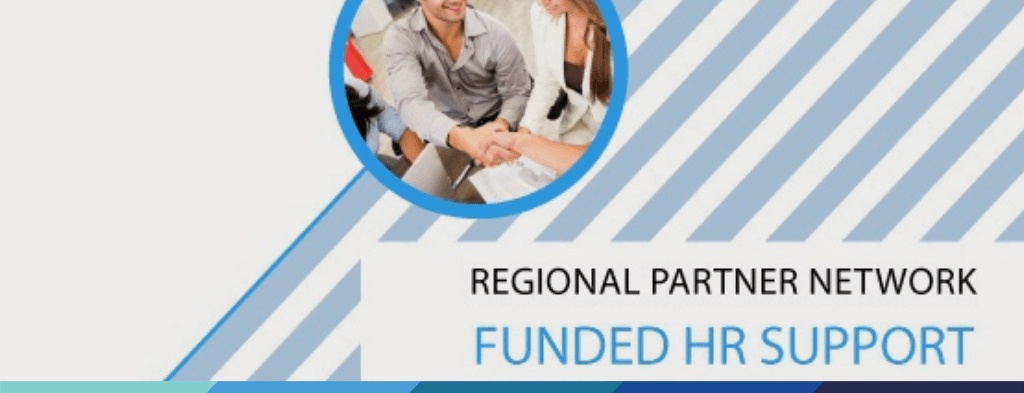[Date of Release 16 March 2020].Please note this information is of a general nature and may be partly out of date due to the unprecedented and fluid nature of developments to hand. Please contact our team for up to date assistance.
In the current changing environment relating to the COVID-19 outbreak we all need to have a flexible approach and keep up to date as things constantly change. For example, over the course of the last week what was the “right answer” to some questions changed, as the government’s response to the pandemic changed.
Now that there are a number of cases in New Zealand (with more expected over the coming weeks), and in light of the government’s announcement of a 14-day compulsory self-isolation period for arrivals from nearly all international ports of origin, below are a list of practical suggestions for employers to follow.
Keep a close eye on changes
- The Ministry of Business, Innovation and Employment (MBIE) is continually updating its guidance to employers about the workplace response to COVID-19, so we recommend employers keep checking this guidance.
- Employers and employees need to be flexible.
- Ultimately, there is no substitute for good communication with your employees and planning for a range of different scenarios in advance.
- The government are reportedly exploring a range of measures to support employers so that they can maintain employment for as many employees as possible. Keep a close eye on announcements over the next week and factor those into your decision-making.
Health and safety considerations
- Employers must manage the health risks to workers and other people affected in the workplace, taking them seriously and treating employees in good faith. Employers should plan ahead and work with their employees to address likely scenarios arising from COVID-19.
- Employers are required to take all reasonably practicable steps to eliminate or minimise risk and protect their employees at all times from workplace hazards. Relevant risks/hazards to consider here are both the actual virus itself, and the mental health issues that may arise for employees given the stress of such an uncertain situation.
- To minimise the risk of spreading infectious diseases in the workplace, encourage employees to follow the Ministry of Health guidelines regarding basic personal actions that we can all take to stop the spread of infectious diseases.
- Employers should also consider providing flu jabs for their employees this flu season. They won’t protect against COVID-19 but will at least protect against a number of strains of influenza.
- To minimise mental health impacts on your employees, our advice is communicate early, and communicate well.
If you offer EAP support, make sure that the contact details are well publicised.
- Managers are best to avoid “joking” about the situation – there are likely to be a range of responses to this type of situation within a workplace (from people who are less concerned to people for whom this could cause more severe mental health responses).
Have a plan for what might happen in a wider outbreak situation, and ensure that your employees are aware of that plan in advance.
Leave and pay – various scenarios
- The rules on annual leave, sick leave and alternative leave in the Holidays Act are quite clear – but none of these neatly apply to a compulsory self-isolation situation in which the employee is not actually unwell.
- A range of possible scenarios could arise within your workforce. Every employee’s particular circumstances need to be considered, but there are some general principles to guide your planning for these situations.
If an employee is sick with COVID-19 or any other illness (or has a dependent who is sick)
- The employee should not be required to work. Furthermore, if the employee has COVID-19, they should be directed not to work (whether at home or in the office) until they have been advised by public health staff that they no longer be in self-isolation.
- The employee is entitled to sick leave if they satisfy the relevant eligibility criteria in the Holidays Act or their employment agreement.
- If the employee has run out of sick leave or has no entitlement yet, they can request annual leave or alternative holidays that are available to them (an employer should most likely agree to this but isn’t required to).
- They might also seek paid leave in advance of entitlement. An employer cannot direct an employee to take annual leave against the employee’s will in this situation.
- Ultimately, in this situation, the period off work may need to be treated as unpaid sick leave.
If an employee has been directed to self-isolate in accordance with Ministry of Health guidelines, but they are not sick:
- They should not be required to attend their workplace or mix with their colleagues/customers.
- Employers and employees should consider whether working from home is practicable during the self-isolation period. In that case, the employee would be paid normally.
- If an employee cannot work from home, then this is not a sick leave situation – but MBIE guidance recommends that the employer and employee consider paid special leave or the use of other forms of leave by agreement.
- Ultimately, whether it is reasonable for an employer to withhold pay from an employee who is in compulsory self-isolation will depend on what is “fair and reasonable” in all the circumstances. This inherently means a “one-size-fits-all” approach will not be appropriate, but again, there are some general principles to consider:
- If an employee was already overseas before the 14-day compulsory self-isolation requirement was imposed (so did not know that this would apply to them before they went on holiday), it is more likely to be unjustified for an employer to direct the employee to stay home without some form of pay for 14 days. Current MBIE guidance suggests that the expectation is that the employee will remain at home on pay, to help to ensure that self-isolation requirements are adhered to.
- If an employee was overseas for work, and then returns home to a compulsory self-isolation period, they should almost certainly be paid for the 14 days (whether they can work from home or not).
- If an employee chooses to continue with an overseas trip which is not required for work purposes and not necessary (purely for leisure, for example) from 16 March onwards, and does so knowing that a 14-day compulsory self-isolation requirement will apply on their return, an employer is more likely to be justified to direct that the 14-day period is unpaid. However, other forms of leave, and the possibility of working from home during that 14-day period, should still be explored first.
- Each case will need to be considered on its particular facts. An employee who travels overseas for a close family member’s funeral may expect to be treated more sympathetically than an employee who books a holiday now with full knowledge that 14-day stand down will apply to them. Employers should engage with unions and employees on these issues and possible scenarios.
If an employee is required to stay at home because their child is required to self-isolate, but neither the employee nor their child is unwell:
- The employer and employee should consider if working from home is possible (in which case normal pay would apply).
- If working from home is not possible, then the employer and the employee should consider other forms of paid leave that may be available (or which could be taken in advance).
- It is possible that this may ultimately be a leave without pay situation if working from home is not possible and no leave entitlements are available.
If an employee wishes to self-isolate but there is no requirement for them to do so under Ministry of Health guidelines:
- The employee must notify their employer if they:
- believe they are at risk of spreading or catching COVID-19 and why, and
- are concerned that attending their workplace places them at risk of exposure to COVID-19 and why.
- If the employer agrees there is a reasonable belief or concern about COVID-19, they must do what is reasonably practicable to address the risk.
- Ways to address risk could include:
- Mitigations in the workplace, for example providing health or hygiene support.
- Agreeing when paid leave (including paid special leave) or unpaid leave will be used.
- An employer may need to institute a policy where they instruct some employees to not come to work (and pay those employees normally), in order to manage the risk.
- Allowing employee to work from home, if that is feasible for the type of work that the employee undertakes.
- Where the employer does not agree there is a reasonable belief or concern, the employer must tell the employee this and provide their reasons for this view.
- The employer may agree the employee will come to the workplace (or work from home) and the employee will be paid normally. The employer and employee may also agree to other arrangements, for example paid special leave. If an employee does not agree to one of these options, they will likely need to take unpaid leave.
Restructuring: redundancies are likely
It is likely that the economic impact arising from COVID-19 and the international response to it will result in employers in some industries needing to significantly restructure their spending – including staffing costs.
We are already seeing an impact particularly in the travel and hospitality industries where some employers are already having to undertake restructuring processes. It is likely that other industries will be impacted also.
As an alternative to restructuring proposals that involve staff lay-offs, employers could consult with employees to see if they would agree to a reduction in salaries voluntarily, so as to avoid a restructuring scenario. However, an employer would need employees’ consent in order to vary their employment agreements.
Employers should bear in mind their duties of good faith under s4(1A) of the Employment Relations Act 2000. In particular:
- Consult with employees while any restructuring plans are a proposal only and before a decision is made.
- Provide employees with relevant information to support why such a proposal is considered necessary in all the circumstances. This might include financial information about the impact of COVID-19 already, or about the projected impact.
- Keep an open mind on other options that might avoid having to terminate employment, such as periods of leave (whether paid or unpaid), or temporary pay reductions to respond to reduced demand (and as a way to avoid redundancies across the business).
- Ensure employees have an opportunity to provide input on the proposed approach before any decisions are made about next steps.
- All alternatives to redundancy should be considered before notice of redundancy is given.
- Make sure any contractual entitlements are provided (that is, notice, redundancy compensation, and any special consultation obligations that apply under the employment agreement).
- We recommend you get in touch with your CHQ advisor in the first instance if you are considering undertaking restructuring and redundancy processes.
Privacy considerations
Employers may wish to consider temperature screening or other medical screening in the workplace. If so, there are a range of legal considerations that will apply. Employers should:
- Consult their employment agreements to assess if any there is any broad consent provided for in agreements with their employees that allows for such screening measures.
- Demonstrate that such measures are “reasonably necessary” and not unreasonably intrusive if the employer wants to introduce this measure for the purposes of health and safety compliance. This will be a fact-specific question – and at this stage it is unlikely to be considered something that would be reasonably necessary given the relatively low incidence of COVID-19 in New Zealand.
- Consider and comply with all of the privacy principles 1-4 under the Privacy Act, ideally before any information is collected.
- Balance health and safety concerns with employee rights in relation to privacy and lawful and reasonable instructions.
The Privacy Commissioner has released guidance on the Commission’s blog addressing privacy issues relating to employers telling other employees about employees with COVID-19, or who are in self-isolation but otherwise well.
The guidance suggests that a “common sense” approach should be taken as to whether it is necessary to tell other employees that one of their colleagues is unwell or in self-isolation. However, it should be noted that obligations under the Privacy Act are subject to the provisions of the Health Act 1956 which provides that a medical officer of health may direct individuals and agencies to disclose information about individuals who pose a public health risk.
If you have any questions about the matters raised in this document please get in touch with your CHQ advisor.
Disclaimer – This publication is necessarily brief and general in nature. You should seek professional advice before taking any action in relation to the matters dealt with in this publication.







